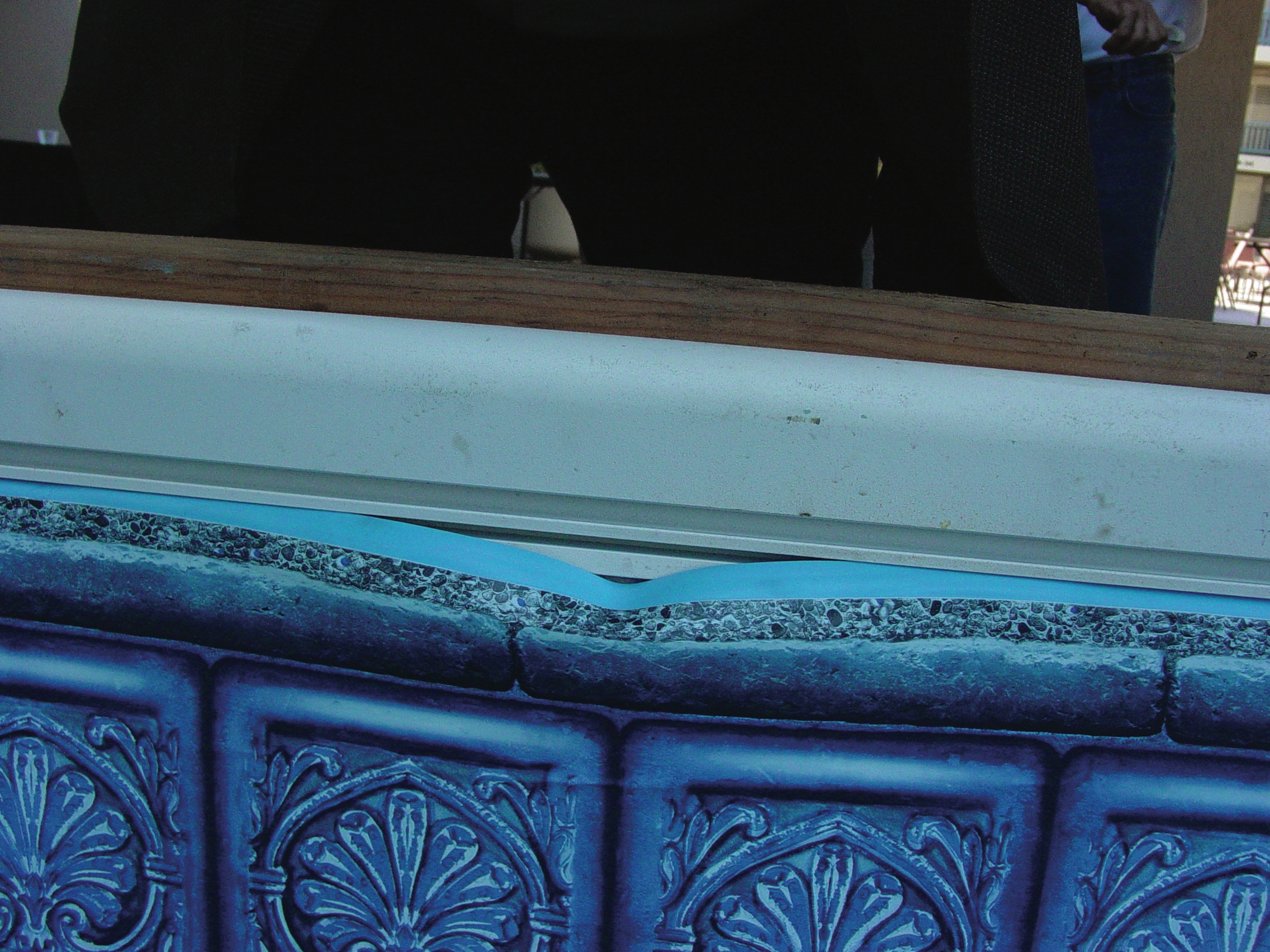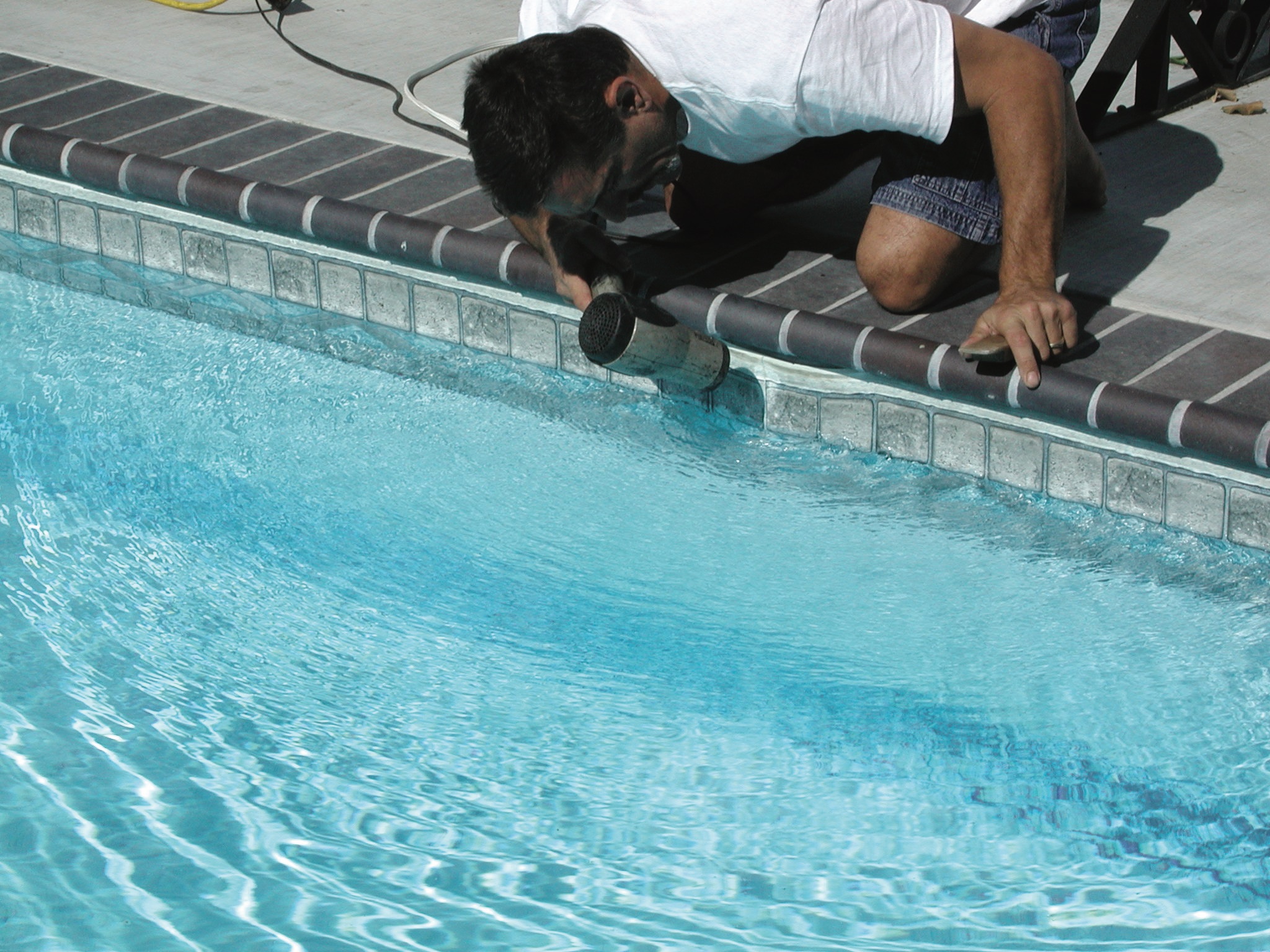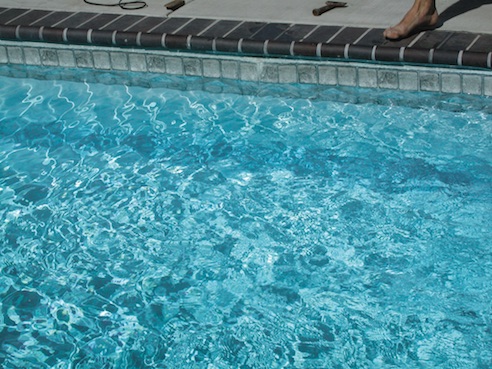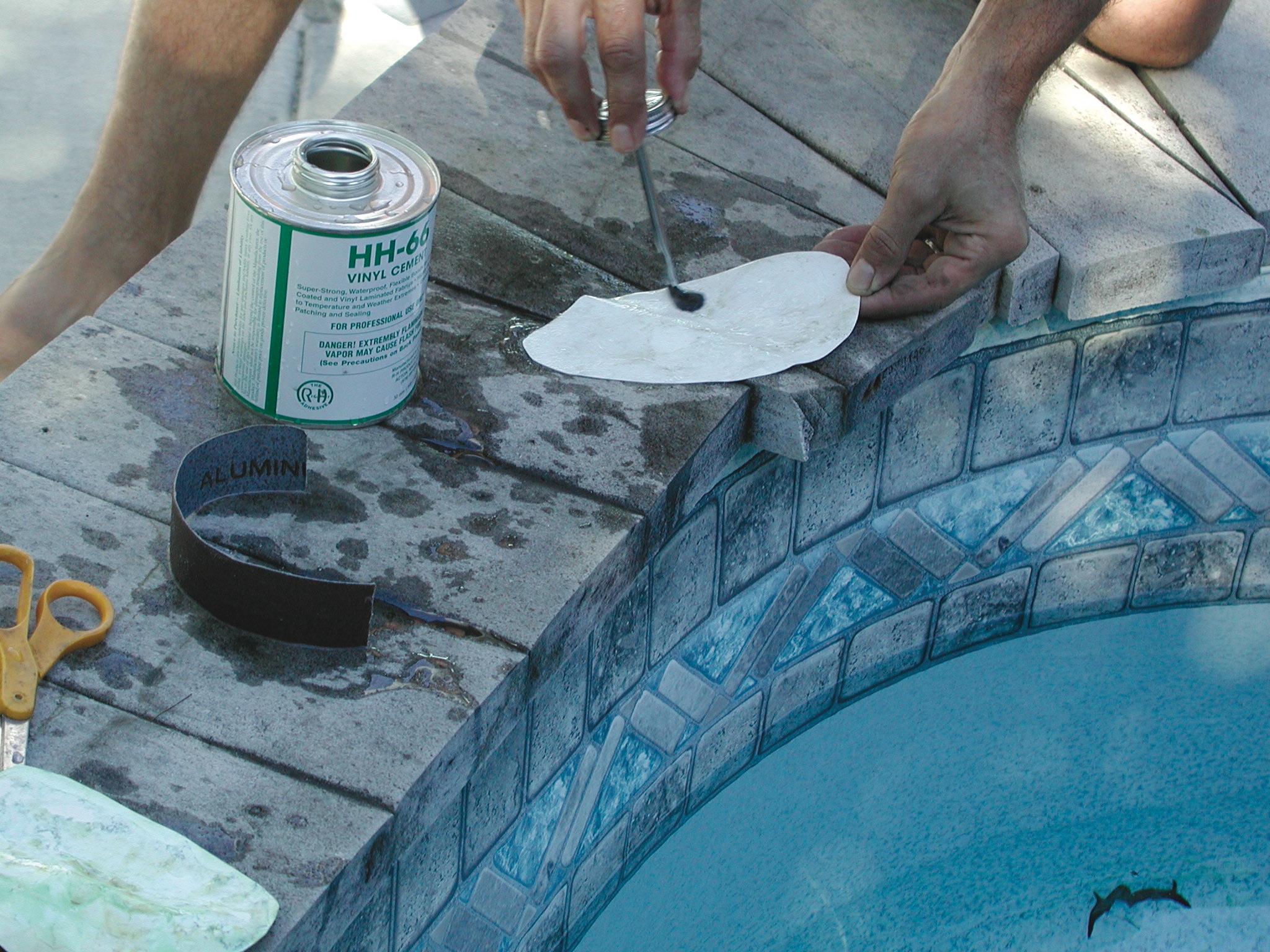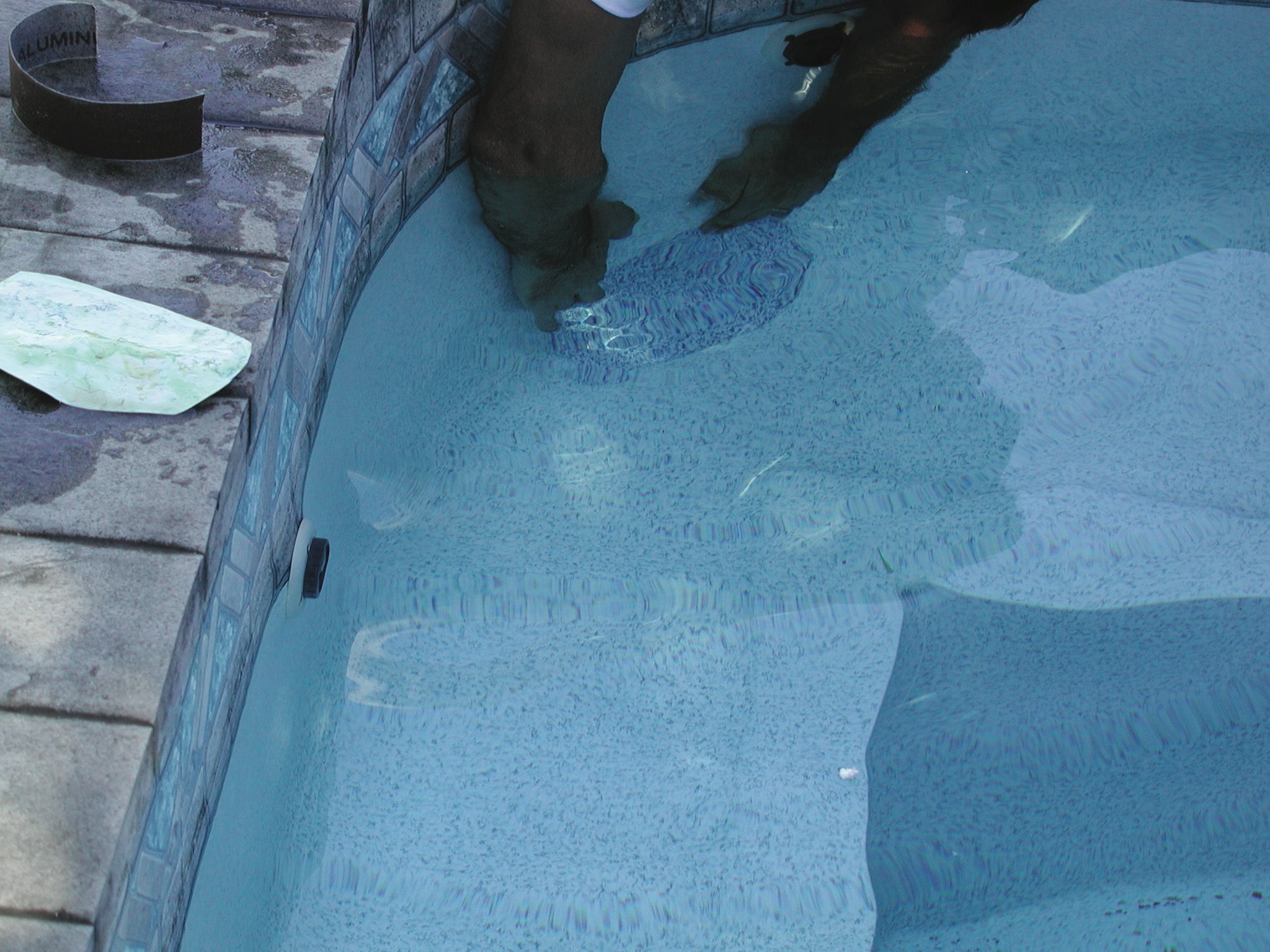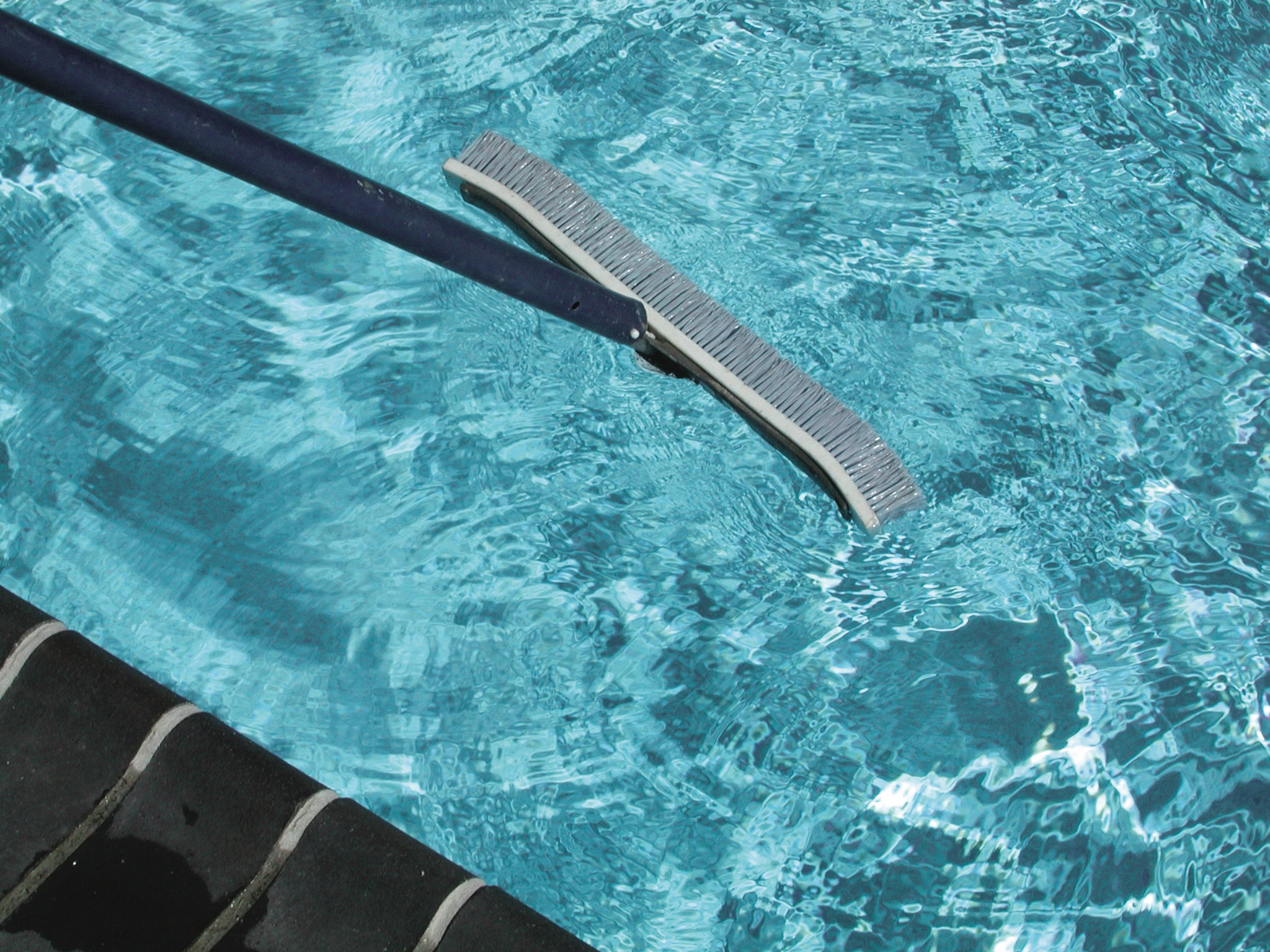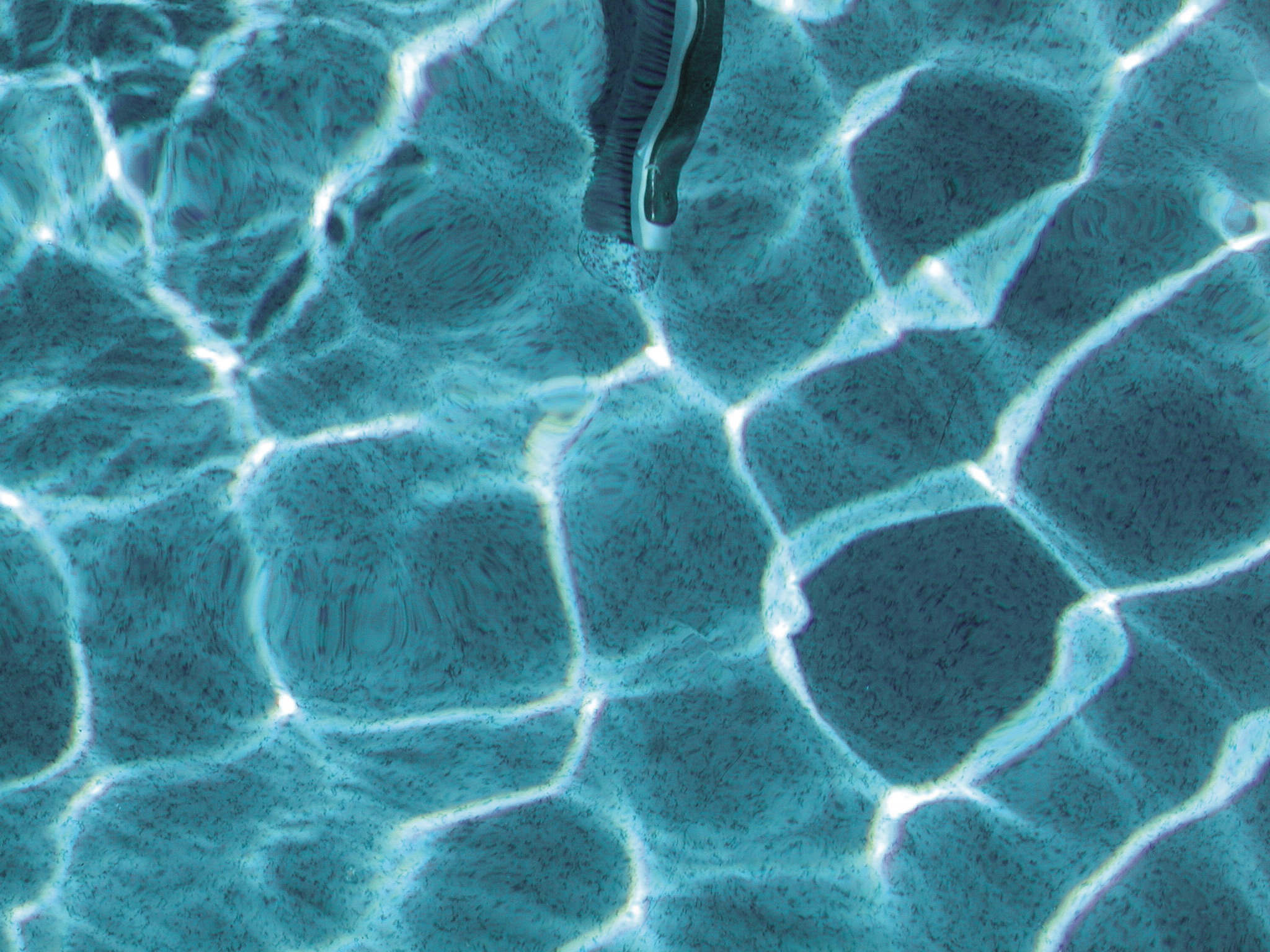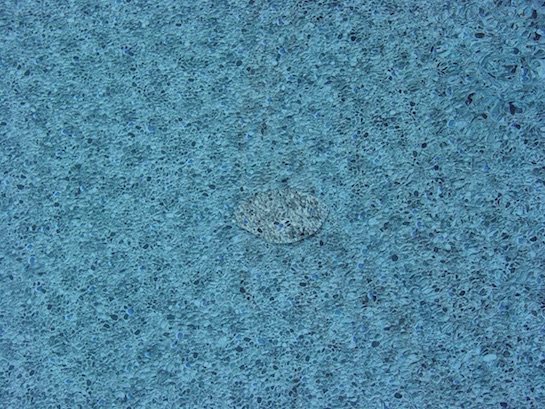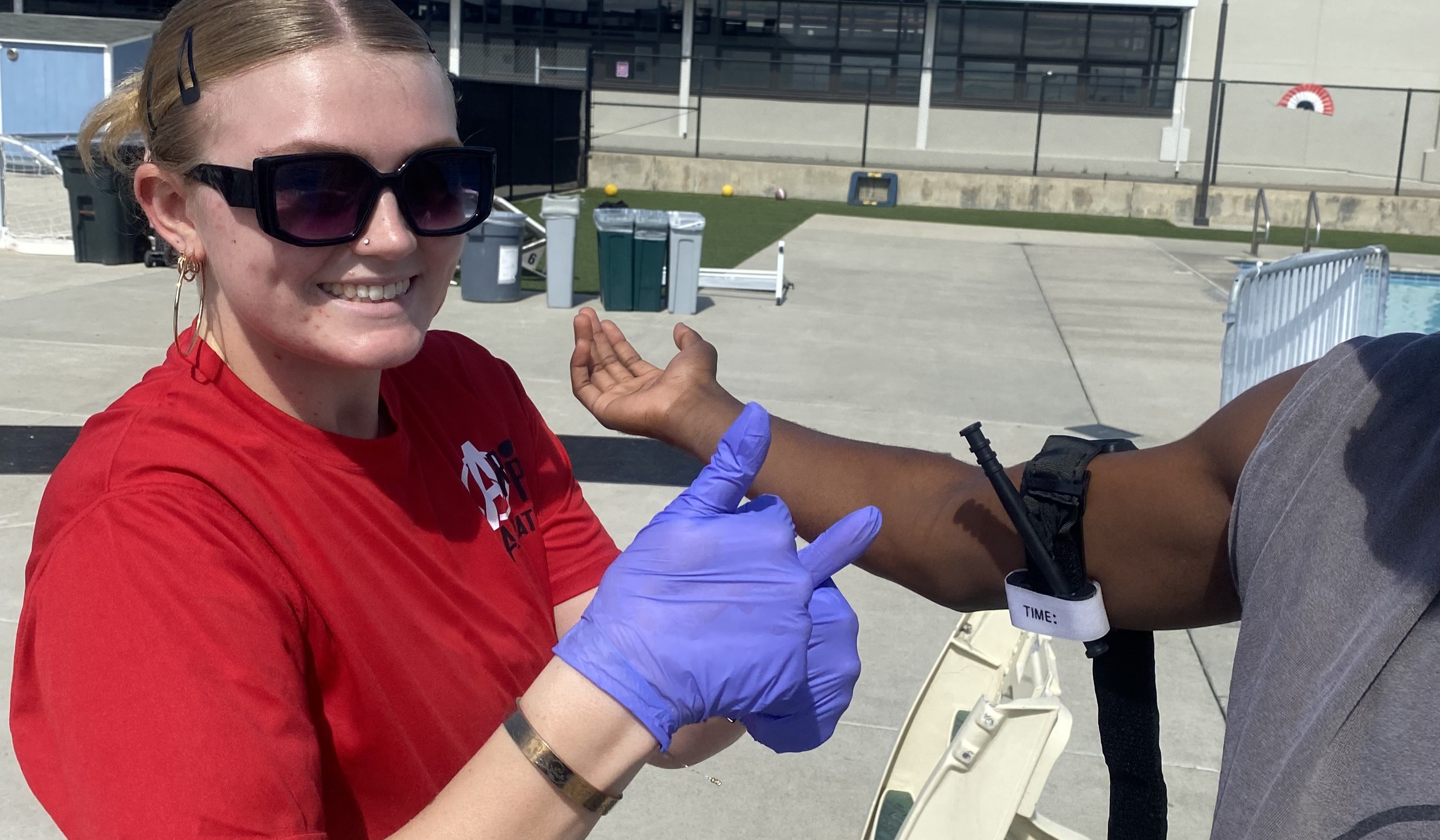The sun’s ultraviolet light can wreak havoc on vinyl. In addition, the corners and bottom of a pool’s vertical wall are inherently vulnerable to deterioration, as are the areas around the cutouts for return lines and skimmers.
In addition, sanitizers and chemicals can inflict their own heavy damage.
Such abuse can result in leaks and ultimately require that the entire liner be replaced. However, savvy service technicians can be proactive if they’re well-versed in the art of vinyl patching and other forms of package pool repair.
In this step-by-step pictorial, you will learn how to repair two common problems: “smileys,” and rips and tears.
The smiley repair
Occasionally, the track that holds the liner in place around the pool perimeter can develop a weak point where the liner bead sits in the groove. This can be caused by several factors, including the sun’s heating of the plastic track, which causes it to expand. Air also can get trapped behind the liner during the pool-filling process, it then finds its way out via the top of the liner, popping it off the track.
When the track is weakened, the water weight can pull down on the liner and force a portion of it to come loose and sag. It gives the appearance of a grin or a smiley face. But for a pool owner, smileys are no laughing matter.
Fortunately, it’s a fairly easy problem to fix. Note: Experts warn techs to never drain the pool to make these repairs. With the water gone, the liner will reshape itself back into the roll from which it came.
1. The weight of the water has caused a small part of the liner …
When it’s just a little tear
Often a tear can be repaired as follows, according to the APSP’s Basic Pool & Spa Technology:
• Lower the pool water level.
• Take stress off the tear.
• Dry it.
• Cut small circles at each end of the tear to stop it from tearing further.
• Using alcohol, clean the liner area to be repaired.
• Go over the area with a fine-grained sandpaper.
• Add glue.
• Use pressure to help it stick together. You may have to add backing so you can press without causing another hole.
Rips and tears
If pool water is kept in balance and protected from the sun, the vinyl will remain in good condition. Yet despite the best of care from the service technician and pool owner, vinyl liners are, by nature, vulnerable to rips and tears.
Most liner manufacturers offer repair kits that include patches and glue. But if you prefer, you can use extra strips of vinyl and your own jar of glue.
It will be difficult to locate an exact liner pattern match for a damaged pool, especially if it’s several years old. Veteran technicians recommend finding a patch that’s as close to the existing pattern as possible, or use a clear piece of material.
Check with your local warehouse or distributor to make sure you’re using the proper glue. You should only use products that are deemed safe for vinyl applications.
Before beginning the repair, there is one vital factor to consider: the site of the rip. Is it reachable from the deck, such as in the shallow end of a pool or hot tub? If it is, then making the repair by hand will be easy.
If it’s in the deep end, you may need to get into the pool or use a telescoping pole to set it in place. Another option is to subcontract an underwater repair specialist, though this can be expensive.
1. Use a sharp knife or razor to remove a patch big enough to co…
PSN acknowledges Bob and James Barci of Ocean Blue Pools in San Jose, Calif., for their assistance with this article.
